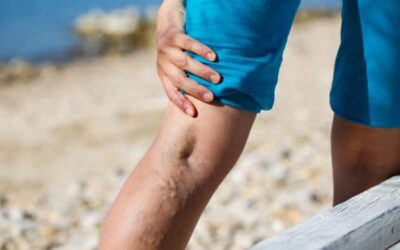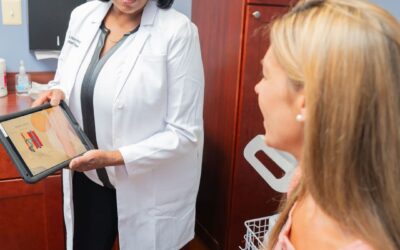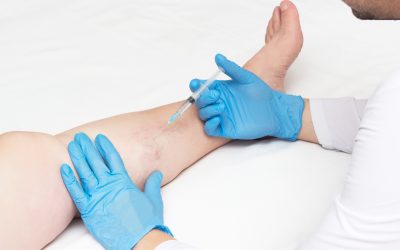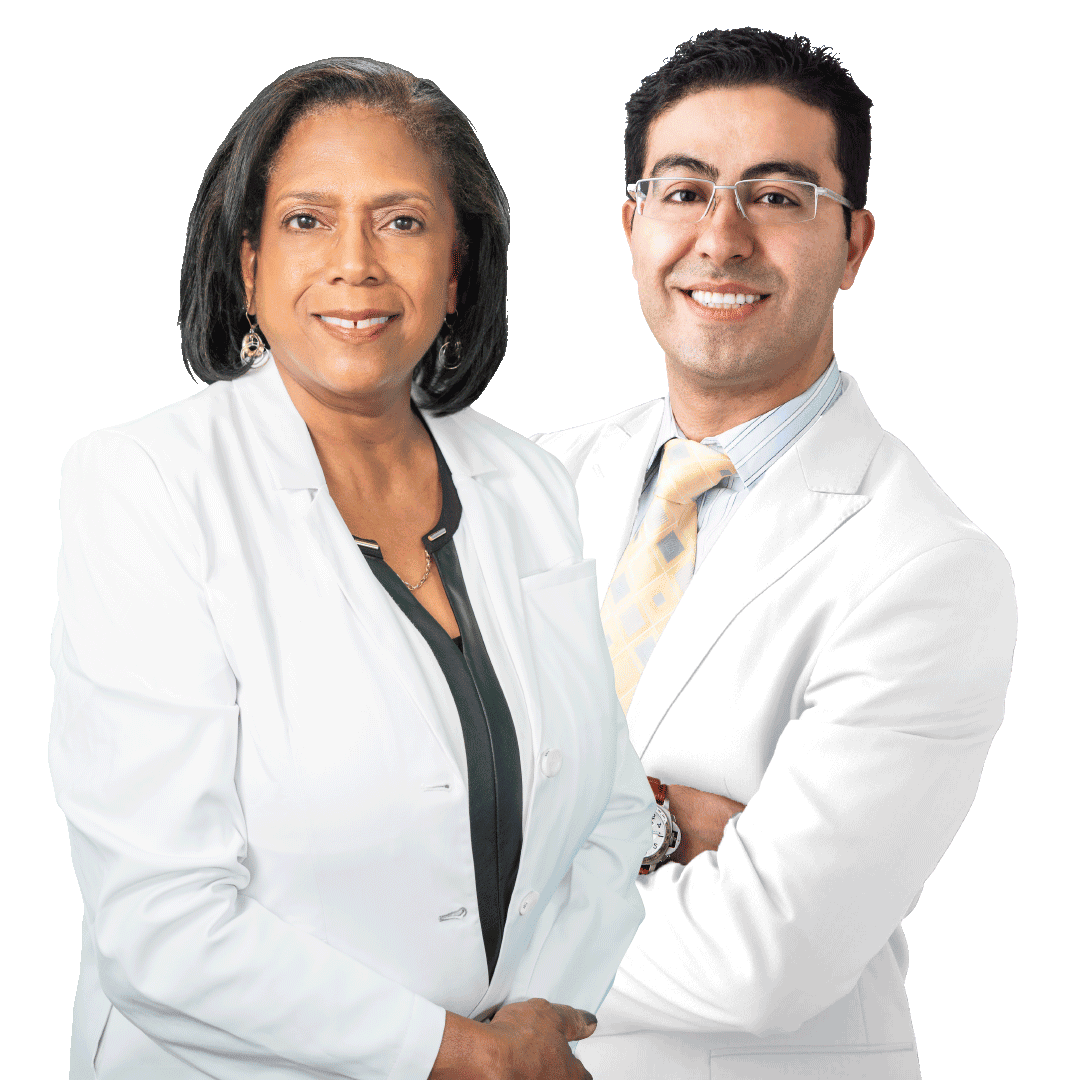Top Maryland Vein Doctors
How to Prevent Varicose Veins When Standing All Day
Varicose veins are particularly common amongst nurses, teachers, drivers, pilots, and individuals with office desk jobs. What do these professions have in common? Most of these professionals include long periods of sitting or standing still, which directly contributes to a heightened risk of varicose veins. But you can’t simply change your occupation to avoid vein problems, so you must implement lifestyle changes to mitigate the risk.
Maryland Vein Treatment is committed to helping you achieve and maintain optimal vascular health. We do that by assessing your risk of vein problems, and then offering personalized tips to mitigate that risk. There’s no guaranteed way to prevent varicose veins, but you can certainly implement lifestyle changes to minimize the risk of varicose veins and vein disease. Maryland Vein Treatment is located at 10215 Fernwood Rd, Suite 301 in Bethesda — please schedule an appointment to visit our medical center for further guidance and assistance.
Poor Blood Circulation And Chronic Venous Insufficiency: The Root Cause Of Varicose Veins
The human circulatory system consists of a complex network of arteries and veins. The arteries transport oxygenated blood from the heart to the tissues, and the veins return deoxygenated blood back to the heart. Arteries carry blood away from the heart, while veins carry blood back to the heart. The veins in your legs have the most challenging task because they must carry blood upward against the force of gravity, and that’s where vein valves come into the picture.
Healthy veins contain tiny, one-way valves that ensure blood flows in the right direction—upward, against gravity. These valves essentially act as one-way doors, allowing blood to flow toward the heart but not backward, thus maintaining healthy circulation. However, when the vein valves malfunction or collapse because of various underlying factors, you suffer from chronic venous insufficiency (CVI), a circulatory disorder wherein gravity forces blood to flow backward and accumulate in the leg veins.
Chronic venous insufficiency occurs when the vein walls weaken, the valves fail to close properly, or both. As a result, blood begins to flow backward and pools in the veins, especially in the legs. This excessive pressure and pooling lead to the enlargement and twisting of the veins, ultimately causing varicose veins to form. Poor blood circulation is the root causes of varicose veins, and the only way to minimize the risk is to improve overall blood flow to the heart.
Why Sitting Or Standing All Day Increases The Risk Of Varicose Veins & Vein Disease
Prolonged sitting or standing can dramatically increase the risk of varicose veins. When you stand or sit for extended periods, gravitational force impedes the upward flow of blood in your leg veins. This increases venous pressure, weakening vein walls and causing valve dysfunction. When your vein valves malfunction or weaken, gravity forces blood to flow backward and pool in the lower extremities, i.e., your legs. This happens because when you sit or stand still for longer periods, your valves have to deal with a stronger gravitational force, thus increasing the risk of chronic venous insufficiency and varicose veins.
Other Risk Factors For Varicose Veins:
- Heredity: If your parents or grandparents had varicose veins, you are more likely to develop them. That’s because some people are genetically predisposed to have weakened vein valves that can malfunction, leading to backward blood flow and varicose veins.
- Gender: Women are more prone to varicose veins, partly due to hormonal changes during pregnancy and menopause. Women also have higher volumes of estrogen and progesterone — these hormones are linked to the weakening of vein valves.
- Age: As you grow older, your vein walls lose their elasticity, and age-related wear and tear can increase the risk of valve dysfunction. That’s why the risk of varicose veins increases after 50.
- Pregnancy: The increased blood volume during pregnancy can lead to varicose veins. Furthermore, the weight of the fetus can push against the deep veins, leading to a higher risk of valve dysfunction. Your body also produces more estrogen during pregnancy, which can weaken vein valves, so that’s why pregnancy dramatically increases the risk of vein problems.
- Obesity: Excess weight puts additional pressure on your veins, increasing the risk.
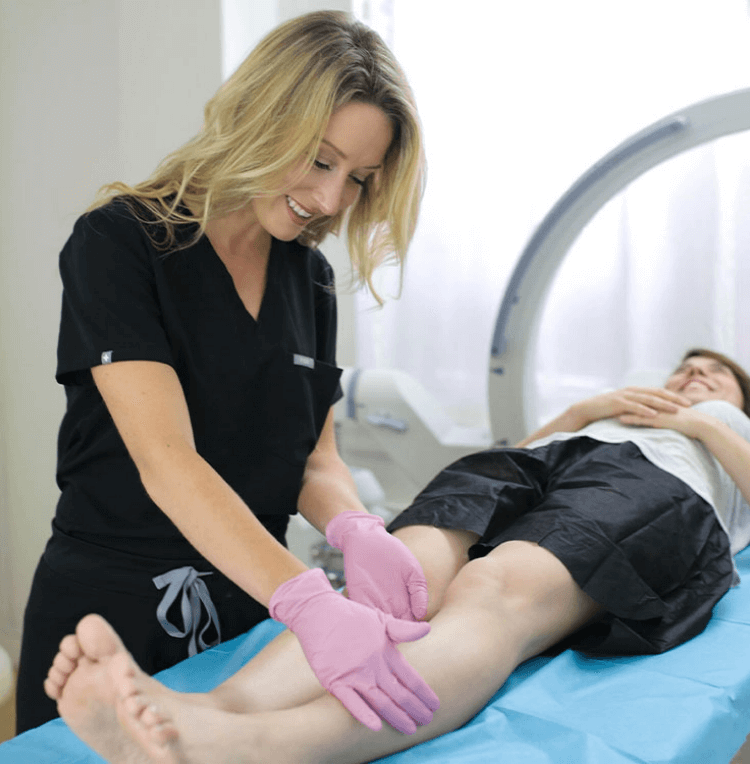
We know health insurance is confusing so we will help you check if you’re covered:
FREE Coverage Checker:
Tips To Prevent Varicose Veins When Sitting Or Standing All Day
#1. Wear Compression Stockings
Compression stockings are designed to improve blood circulation in your legs by applying pressure to the veins. These specially designed garments apply gentle, graduated pressure to the legs, improving blood flow towards the heart. By effectively countering the gravitational force that hampers blood circulation in the lower extremities, compression stockings reduce vein dilation and valve stress. Make sure to choose the right compression level, as recommended by your vein doctor.
#2. Maintain A Healthy Weight
Excess body weight puts added pressure on the veins, making them more prone to weakening and developing varicosities. By maintaining a balanced weight through proper diet and regular exercise, you reduce the stress on your veins. This, in turn, helps to preserve their integrity and function, significantly lowering the likelihood of varicose veins and promoting overall vein health.
#3. Elevate Your Legs
Whenever you have the chance, elevate your legs above heart level. This helps blood flow back to the heart and relieves the pressure on your leg veins. If you sit for long periods, try elevating your legs on a table or some pillows. While lying down, you can prop your legs up on some pillows. When you elevate your legs above your heart, gravity aids in pushing some of the accumulated blood toward the heart, thus minimizing the risk of varicose veins. If you can’t elevate your legs entirely, even a slight incline can be beneficial.
#4. Shift Your Weight
Avoid standing in one position for too long. Shift your weight from one leg to the other or take short breaks to walk around. If you have a job that requires long periods of sitting or standing still, take short breaks every 30 minutes to walk around the office and stretch your legs. This simple action can help prevent blood from pooling in your leg veins.
#5. Stay Hydrated
Staying well-hydrated is a simple way to minimize the risk of varicose veins. Proper hydration ensures that your blood remains at an optimal consistency, preventing it from becoming too thick or viscous. Thickened blood can increase the chances of clot formation and affect smooth circulation. If you drink lots of water throughout the day, you improve overall blood circulation to the heart, which also minimizes the risk of vein disease.

Visit Our Maryland Vein Treatment Center
#6. Avoid Tight Clothing
Wearing tight clothing, especially around your waist and groin area, can restrict blood flow and contribute to varicose veins. This restriction causes blood to pool in the lower extremities, leading to vein stress and potential valve dysfunction. By choosing loose-fitting, comfortable attire, you promote unobstructed blood circulation, reducing the chances of varicose vein formation and ensuring your veins remain healthy and functional.
#7. Perform Leg Exercises
Strong calf muscles can effectively pump blood upwards against gravity, aiding in the return of blood to the heart. Regular leg exercises improve blood circulation in the legs, reducing the likelihood of blood pooling and vein damage. You should ideally engage in cardiovascular exercises that engage your calf muscles, such as running, swimming, yoga, and cycling. You can also do regular calf stretches to improve blood flow to the heart.
#8. Use Anti-Fatigue Mats
Anti-fatigue mats are cushioned mats that provide support and reduce the strain on your leg muscles and veins. By alleviating the constant pressure on your lower extremities, anti-fatigue mats help maintain healthier circulation, reducing the chances of blood pooling and vein stress. Place these mats in your workspace to ensure greater leg comfort during extended periods of sitting or standing.
#9. Take Breaks
Taking regular breaks, even for a few minutes, can minimize the risk of varicose veins. Prolonged periods of standing create continuous pressure on your leg veins. Short breaks allow you to sit down or move around, relieving this pressure and promoting better blood flow. By interrupting the cycle of prolonged standing, you reduce the risk of blood pooling in your legs, helping to maintain healthy veins and preventing varicose vein development.
#10. Consult A Vein Specialist
If you are at a high risk of developing varicose veins due to your job or other factors, consider scheduling a consultation with a vein specialist at Maryland Vein Treatment. We offer varicose vein consultations to assess your risk and provide personalized recommendations for prevention and treatment. Our vein doctors also use advanced diagnostic tests to visualize your blood flow and determine if you have chronic venous insufficiency at the earliest stage possible, thus treating the root cause before varicose veins can appear.
Visit Maryland Vein Treatment Today
Preventing varicose veins when standing all day requires a combination of lifestyle changes and proactive measures. However, if you are already experiencing symptoms or are concerned about your vein health, don’t hesitate to reach out to Maryland Vein Treatment for expert evaluation and personalized care.
